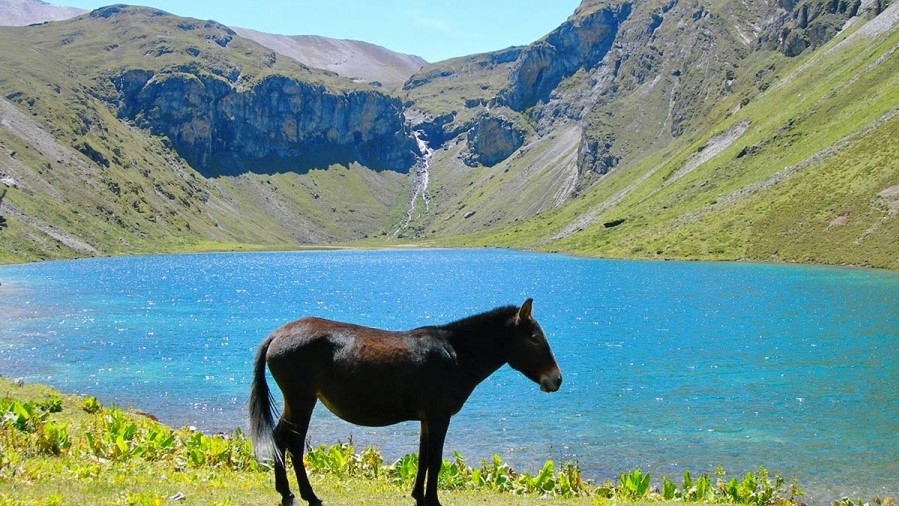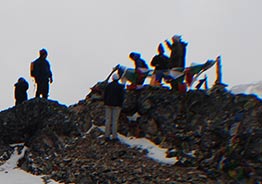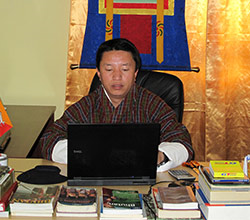The Dagala Thousand Lakes Trek, situated in the pristine wilderness of Bhutan, is a trekking adventure that promises a truly mesmerizing experience. Renowned for its high-altitude lakes, stunning alpine meadows, and breathtaking mountain vistas, this trek offers a unique opportunity to immerse yourself in the unspoiled beauty of the Bhutanese Himalayas.
The Dagala mountain range, near our capital city of Thimphu Bhutan, divides the two famous valleys of Thimphu and Wangdue. This Dagala Thousand Lake Trek will takes us into an area adorned with a multitude of pristine, crystal clear lakes. As we walk amidst the shimmering lakes we will be treated to stunning views of the entire Himalayan mountain range and some of the world’s highest peaks including Mt. Everest, Jomolhari, Masang Gang, Jichu Drake, Gangche Ta, and many more.
This trek gives us an opportunity to explore some of the large numbers of really beautiful and picturesque high-altitude lakes. These trout-filled lakes are a paradise for people who love fishing. Not only this, but the trail also takes us through several Bhutanese villages so we can get a good idea of traditional Bhutanese village life as you make your way back from the lakes.
The Dagala Thousand Lakes Trek is somewhat strenuous trek but it is well worth the effort because of the tranquility and beauty of natural landscape that you will enjoy during the journey. Typically trekkers get to see alpine flowers, rhododendron, and the different species of animal and even musk deer. The best time for this trek is between April-June or September –October.
The Dagala Thousand Lakes Trek is a journey through a pristine and enchanting landscape, where shimmering lakes, towering peaks, and cultural encounters combine to create an unforgettable adventure. It’s an opportunity to explore Bhutan’s unspoiled wilderness, connect with its people, and immerse yourself in the serenity of high-altitude lakes—a trek that promises both natural wonder and a deep appreciation for the Himalayan beauty.
Trekking provides the best opportunity to experience and explore the real heart of Bhutan.
Discover a unique insight into the rural culture of the Kingdom of Bhutan.
Close contact with the people living in the remote areas of Bhutan.
Explore and appreciate the pristine environment of Bhutan.
Enjoy with the wilderness experiences in Bhutan.
Explore the adventure tours of Bhutan.
Enjoy with majestic views of the country’s virgin landscapes and unclimbed mountains.
Explore the routes taken by our ancestral.
Trekking through the beautiful lakes of Bhutan.
Day 01. Arrive to Bhutan – Transfer to Thimphu.
The flight into Paro on our national carrier, Druk Air, is a befitting introduction to the spectacular beauty of our country. In clear weather, magnificent views of the world’s highest peaks like Gangkar Puensum, give way to the lush green Paro valley as you land.
Your Bhutanese escort from Authentic Bhutan Tours- For Your Bhutan Experience! will warmly welcome & greet you on arrival, and then to Thimphu, the capital city of Bhutan. The drive will take about 1 hour and 30 minutes along a river valley, past small villages and traditional farmhouses, through peaceful countryside. It’s a small & charming capital city located in the heart of the Himalayas. On reaching Thimphu, we will do a short hike, from Kuensel Phodrang to Depsi (South of Thimphu).
Before we start the hike, we will visit to Tallest Buddha Statue in the world. Then we will start the hike. The hiking is more or less very easy and plain walk through the forest of Pine, Rhododendron and Oak trees. The hike will take about 1-hour 30 mins. We can see Thimphu city, Thimphu River (Wangchhu) and other adjacent towns through this hike. We can also take some fluttering prayer flags (Lungta) and hang them between two to three trees that will bring fortune, happiness and good health to every one in this world including your enemy.
Evening visit Tashi Chho Dzong, seat of the national government and the Central Monastic Body, including the summer residence of the Je Khenpo (Chief Abbot of Bhutan) and stroll around Thimphu town. Dinner and overnight stay in the hotel, Thimphu
Meal Plan: Welcome Dinner Accommodation: Hotel
Day 02. Thimphu - Gynekha – Gur
After our early breakfast, we will drive to Genekha where our trekking staff will be waiting for us to embark this trek. The trek starts at beautiful Gynekha village and begins with a short descent to the river. After crossing the river, we start climbing until we reach a huge rock platform from where we have a picturesque view of the valley below. Further walk of another two hours we reach to Gur, an area of yak pastures located just below the main trail is our today’s campsite.
Accommodation: Camping Camp Site: Gur Altitude: 3,290m Distance: 7 km. Ascent: 550m. Ascent: 210m. Time: 5 hours.
Day 03. Gur – Labatama
Today’s trail takes us across the high ridges from where we can truly appreciate the rugged beauty of your surroundings and the mountain vegetation. The path winds through refreshing meadows adorned with wild flowers and asparagus (in spring).
The first mountain pass we cross is marked by a huge cairn and gives a spectacular view of Kanjenjunga (Sikkim) and a number of the Bhutanese Himalayan peaks. As we descend the pass we will be able to see the entirety of the Dagala mountain range including meadows and yak herder camps.
Once we have descended into the Labatama valley we begin climbing gradually through the valley, passing several yak herder huts before we arrive at Uthso Tsho. The campsite is right next to the lake.
Accommodation: Camping Camp Site: Uthso Tsho Altitude: 4300m. Distance: 12km. Ascent: 1220m Ascent: 110m. Time: 5 hours.
Day 04. Labatama Stay.
Today we will stay as a relaxing or resting day at Labatama. We can do an excursion to any of three nearby lakes: Reli Tsho, Hen Tsho and Jama Tsho. Hikers are encouraged to take the opportunity to engage in some trout fishing as the location is ideal. Permits are required for fishing so you should request your tour operator to make the necessary arrangements beforehand.
Day 05. Labatama – Panka
The trail climbs along the western side of Dala Tsho up to a saddle at 4,520m. From here onwards we will have a fantastic view of the majestic Himalayan peaks all through the descent. The mountain peaks visible include Mt. Everest (Nepal), Mt. Kanchenjunga (Sikkim), Mt. Jomolhari, Mt. Jichu Drake, Mt. Tshering Gang, Mt. Khangbum, Mt. Masang Gang, Mt. Tsende Gang and Mt. Gangche Ta.
If we want an even better view, we can climb a peak close to the saddle with an altitude of 4,720m. From the saddle the path descends, passing some yak herder huts to Doccha Chhu. We will follow the river for a while, but stay higher up on the slope to reach Panka with ascents and descents along the way.
Accommodation: Camping Camp Site: Panka Altitude: 4000m. Distance: 8km. Ascent: 260m. Ascent: 520m. Time: 6-7 hrs.
Day 06. Panka – Talakha
Today we will be crossing of several passes but none of them require a major climb. We should keep our eyes open for different varieties of blue poppy (June-July) and mountain birds while in this area. After crossing the last pass, Tale La (4,180m) we start a long descent to Talakha Monastery. We will camp right beside the monastery and wake up to the early morning prayers of the monks. From here we will be treated to a great view of Bhutan’s capital Thimphu valley.
Accommodation: Camping Camp Site: Talakha Monastery Altitude: 3080 m. Distance: 8km. Ascent: 180m. Ascent: 110m. Time: 5-6 hrs.
Day 07. Talakha – Chamgang
From the monastery it’s a short walk down to the feeder road, which will lead us to the village of Chamgang. (Distance: 6 km. Time: 3hours. Descent: 440m)
At Chamgang, our car and driver will wait for us with some refreshment. We will bid farewell to our trekking staff and the transfer to hotel Timphu. Lunch will be served at hotel.
After lunch, we will do sightseeing in Thimphu like visit to Buddha Point, a gigantic Shakyamuni Buddha statue in the mountains of Thimphu valley. The tallest Buddha in the world. Memorial Chhorten, built in 1974 in memory of third king Jigme Dorji Wangchuk and the temple inside gives good examples of tantric Buddhist and its philosophy. Mothithang mini-zoo, to see the National Animal of Bhutan (Takin). The Takin (Budorcas Taxicolor) which is the National Animal of Bhutan is attributed to a legend of the animal’s creation in Bhutan in the 15th century by Lama Drukpa Kunley, commonly known as ‘Divan Madman’.
Evening, stroll around Thimphu city, then visit Tashichho Dzong, seat of the National Government and the Central Monastic Body, including the summer residence of the Je Khenpo (Chief Abbot of Bhutan). Dinner and overnight stay in the hotel, Thimphu. Hotel Pedling or similar standard.
Day 08. Thimphu – Punakha (day excursion).
After our breakfast, we will drive to Punakha/Wangdi. The road climbs steeply through forests of pine, hemlock spruce and rhododendrons. At Dochula Pass (3150m) you will have a breathtaking panoramic view of the Eastern Himalayan Mountain ranges. The pass is adorned with 108 small stupas and many kinds of prayer flags. Then the road descends through lush forests to the fertile valley of Punakha & Wangdi Phodrang. On reaching Lobesa, we will visit Chhimi Lhakhang, which is located at a hilltop. The temple is known as ‘the temple of fertility’.
At Punakha, visit the most beautiful dzongs in Bhutan, Punakha Dzong. Then we will have lunch and after lunch we drive back to Thimphu. Evening stroll around Thimphu town. After lunch, we will see the illuminating places like the Dzong, Chhorten and others for your photographs. We can also enjoy the nightlife with locals if it is not on Tuesdays. Over night stay at hotel Thimphu. Peaceful Resort or similar standard.
Day 09. Thimphu – Paro.
Today we will drive to Paro and hike to Paro Taktshang Monastery, the most famous and sacred monastery in Bhutan. Taktshang means “Tiger’s Nest” named after Guru Rinpoche who reportedly flew to this site riding on the back of a flying tigress in the 8th century. We have to walk about 2hours and 30minutes up-steep from the road end. The trail climbs through beautiful pine forest, many of the trees festooned with Spanish moss, and an occasional grove of fluttering prayer flags.
Lunch will be served at Taktshang cafeteria. While coming back, visit Kyichu Lhakhang, it is one of the two most sacred and the oldest temples in Bhutan, built in 7th century by Tibetan king Songtsen Gampo (the 33rd Tibetan king, who is also the manifestation of Avalokiteshvara, commonly known to Bhutanese as Chenrize). Evening at leisure, dinner and overnight stay at Paro Hotel. Olathang Hotel or similar standard.
Day 10. Paro – Paro International Airport (Departure)
After our breakfast, we will drive to Paro International Airport for your onward flight. Our guide and driver will bid you farewell here at the airport. We wish you a very safe and pleasant flight for your onward destinations.
Start planning your tailor-made Dream Holiday to Bhutan – The Land of happiness!
In order to experience the best and rewarding fulfillment clients must plan in advance the different logistics that you have in your minds before actually venturing into the world of trips. You might have wishes and hopes for which you need to plan.
The following information will help you to plan your dream trip to Bhutan.
1. When and how to visit Bhutan?
Choose your traveling date like Arrival/Departure date. You also need to choose entry/depart Bhutan via AIR or LAND.
By Air: Druk Air, the national carriers is the only service operator in the kingdom and operates several flights per week from Bangkok (Thailand), Delhi & Kolkata (India) and Kathmandu (Nepal) to Paro (Bhutan). The Paro International Airport is located about an hour and a half drive from Thimphu, the capital city of Bhutan.
Paro airport is daylight restricted, and the flights are totally dependent on the weather. As a result, sometimes flights are delayed. It is therefore a good idea to keep at least 24 hours of transit time for connecting flights out of Paro. You might also want to consider traveling on a non-restricted ticket so that if you miss a connecting flight, you can be rerouted or seated on the first available carrier.
Sometimes flights into Paro are disrupted because of unfavorable weather conditions. If this occurs, the flight will stop for the night at the transit airport. To be prepared, you may want to carry your essential personal items in your carry-on luggage.
By Land: Phuentsholing, a Bhutanese town in the southwest has road access to India. It is located about 170 km from the Indian domestic airport at Bagdogra, West Bengal. Phuentsholing is about 172 km from Thimphu the capital city of Bhutan and is about 6hours drive distance. And S/
2. What are your itineraries?
All the tours can be customized and extended as per our valued client’s requirements. There are sample itineraries for your kind reference and it will give you some general idea of the likely trip scheduled.
Complete the tour request form and submit it to us. Send us correct name list. We will send you the flight reservation status via email.
After confirming your reservation, we need the scanned copy of member’s passport.
Please remit us full payments and send us the copy of remittance paper via email. Visa will not be accepted without full payment.
We will send you the flight ticket copy and Visa Clearance Copy prior to your departure to Bhutan via email. You need to print out and carry along with you.
Start packing and looking forward to have a memorable trip in the LandThunder Dragon, DrukYul.
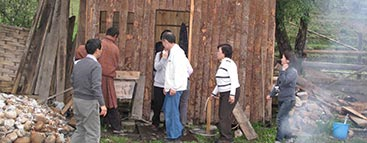
Hot stone bath (Dhotsho) is a traditional bath of Bhutan, where a tradition of heating up stones and then soaking in the water that is in turn heated by the stones. This is also a curative method and is used throughout the country We Bhutanese belief that this bath has so much of medicinal benefits. Some diseases are curable-like joint pains, hypertension, stomach disorder, arthritis and many other minor diseases. Especially for the old age, where we have lots of body pains, joints pains helps a lot by this Hot Stone Bath (Dhotsho).
I think, the minerals in the rocks have certain chemicals, which can cure certain disease of our body. Hot stone bath has no side effects. It is in its pure natural form. We can organize the hot stone bath during your stay in Bhutan.
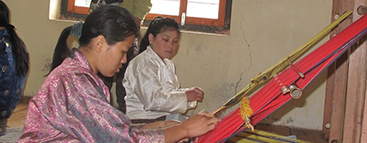
The Bhutanese textiles are rich, vibrant, and colorful and are a complex art form as well as an integral part of the Bhutanese culture. This Bhutan weaving experiences will give you an insight about the rich textiles in Bhutan. You can sit one of the handlooms of Bhutan and weave your self practically. We promise that you will really enjoy this with great satisfaction in your life.
We will also see or learn the natural coloring and dyeing. You can bring your own materials like handkerchief to dye and color. So visit Bhutan and experience it practically by yourself.
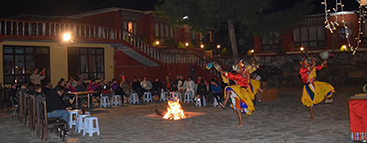
Folk Performing Arts & Music in the Himalayan Kingdom of Bhutan
We have Cultural Program Performing groups, which they will perform like Traditional folk songs, dances and keeps original tunes and dances alive. Moreover, new choreography for some traditional and regional songs is sometimes developed.
The troupe also performs mask dances that have historical and spiritual significance.
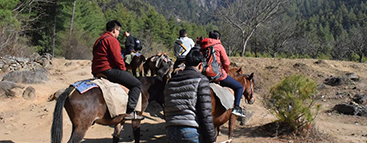
Tiger’s Nest is most visited spot in Bhutan and it is much awaited by every tourist who visits Bhutan to climb to Tiger’s Nest.
It takes about 2 hrs 30mins up steep climb through the forest of pine, oak and Rhododendron. However you can ride the horse and climb till the Taktshang cafeteria.
Our company will provide the Trekking Equipment like Tents (Sleeping, Dinning, Toilet, Shower Tents), Mattress, Hot-Water bag, Cooking Utensils, Sleeping Bags. But we advise our clients to bring their own sleeping bags, if they can. However our guests have to bring some trekking gears by themselves. Therefore, everything mentioned below on the list are useful, and most of the things are important on trek.
Equipment for all the trekkers
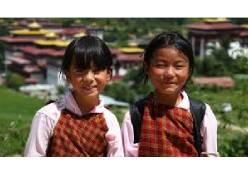
Footwear
camp shoes or thongs
socks – polypropylene
Clothing
jumper or pile jacket
hiking shorts (men) or skirt (opt)
waterproof jacket, poncho or umbrella
hiking pants
T- shirts or blouses
underwear, sun hat
swimwear (opt.)
insulated paints
nylon wind breaker
nylon wind pants
long underwear
woolen hat
gloves
long gaiters
Above 4000 m.
socks, wool, to wear with boots
socks, light cotton, for under wool socks
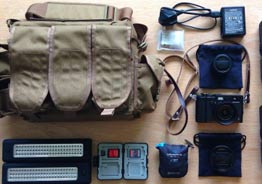
Photography Equipments
( Optional )
lenses cleaning equipments
film
compass
thermometer
binoculars
books for reading while waiting for plane
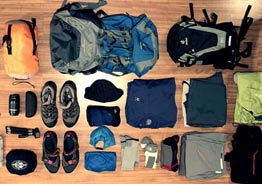
Other Equipments
sleeping bag
water bottle
torch
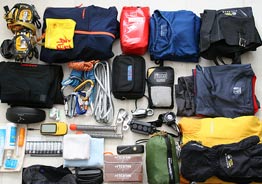
Miscellaneous Items
toilet paper and cigarette lighter
small knife
sun block
towel
laundry soap
medical and frist aid kit
pre-moistened towelettes
sewing kit
sunglasses
sun block for lips


